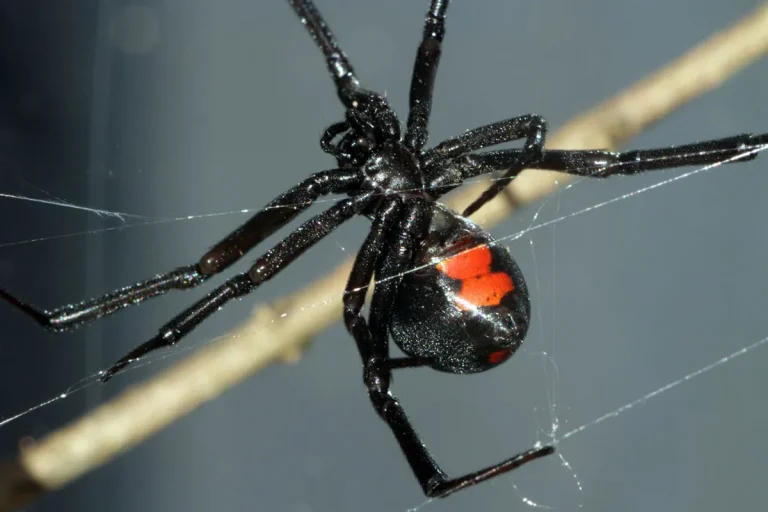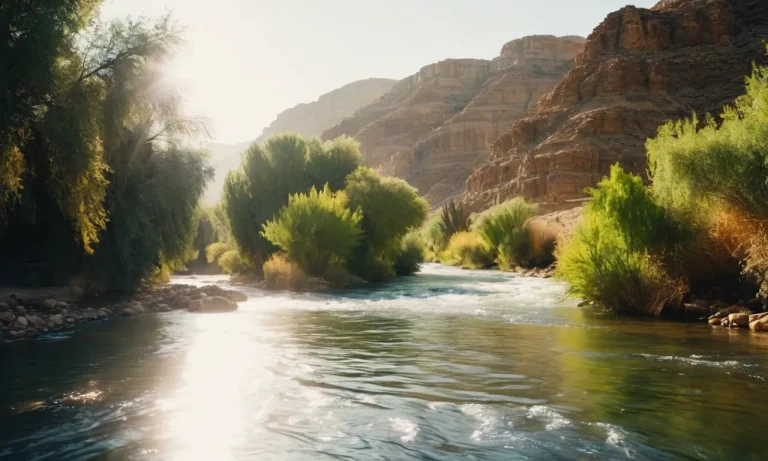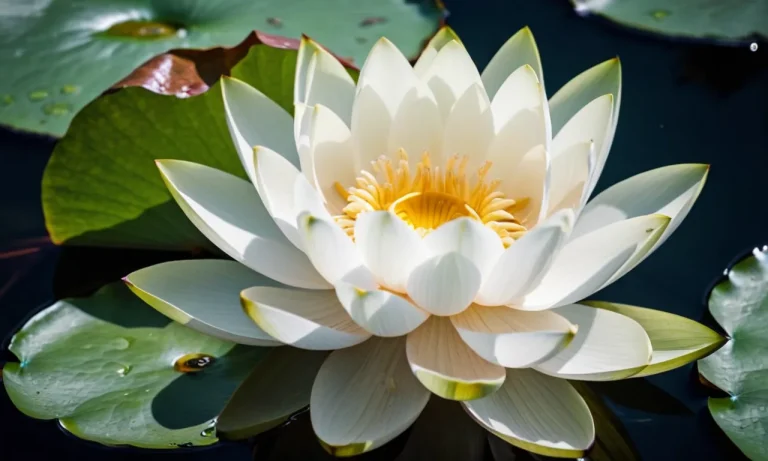The horseshoe crab is an ancient creature that has roamed the oceans for hundreds of millions of years. With its unique armor-plated body and sword-like tail, this living fossil certainly has a prehistoric look about it.
If you’re short on time, here’s a quick answer to your question: The horseshoe crab symbolizes longevity, resilience, insight, protection, and community due to its long evolutionary history, vital role in medical research, navigational abilities, tough exterior shell, and tendency to spawn in large groups.
In this comprehensive guide, we will uncover the various spiritual meanings and symbolism behind the horseshoe crab by exploring its biology, historical uses, ecological importance, and prevalence in myth, legend, and astrology.
The Biology and Natural History of Horseshoe Crabs
Morphology and Physiology
Horseshoe crabs have a unique morphology that has remained largely unchanged for over 400 million years. Their most distinctive feature is the hard shell, called a carapace, that resembles a horseshoe from which they get their name.
Underneath the shell, horseshoe crabs have five pairs of legs for walking and movement and a long, pointed tail or telson that aids in flipping the crab over if it gets turned upside down.
The respiratory system of horseshoe crabs relies on book gills that are located on the underside of the crab near the legs. These are blue-colored structures used to obtain oxygen from water as it passes over them.
Horseshoe crabs also have a simple circulatory system with a two-chambered heart that pumps pale blue blood through arteries. Their blood contains hemocyanin to transport oxygen, which is why it has a bluish tint.
Perhaps most notably, horseshoe crab blood contains special immune cells called amebocytes that coagulate and clot when detecting bacterial endotoxins or lipopolysaccharides (LPS). That is why their unique blood is highly valued for biomedical applications in detecting pathogens or contamination in drugs and implantable devices.
Reproduction and Life Cycle
Horseshoe crabs reach sexual maturity around 9-12 years of age. Mating typically occurs on beaches in spring during high tide periods associated with the full moon. The smaller male crab uses specialized claws to latch onto the rear of the female’s shell as she digs in the sand to lay her eggs, which can range from 16,000 to 64,000 per season!
The eggs remain buried under the sand through the summer, protected until the larvae hatch out as trilobite-like forms called trilobite larvae in fall or early winter. The tiny larvae swim up into the water column and go through various molting stages as they grow, taking 1-3 years before finally transitioning from the larval stages to become adult horseshoe crabs.
Evolutionary History
Horseshoe crabs are often referred to as “living fossils” since they have existed for over 450 million years with relatively little change over that vast timescale. Their ancestors date back to the Late Ordovician period.
Fossil evidence indicates horseshoe crabs originally lived in shallow marine habitats. They survived major extinction events like the Permian-Triassic mass extinction which killed off most marine species.
Today there are only four remaining horseshoe crab species globally, with habitat loss remaining an ongoing threat.
| Species | Region |
|---|---|
| American Horseshoe Crab (Limulus polyphemus) | East Coast of North America |
| Chinese Horseshoe Crab (Tachypleus tridentatus) | Coastal Regions of Southeast Asia |
| Indonesian Horseshoe Crab (Carcinoscorpius rotundicauda) | Islands of Indonesia and Singapore |
| Japanese Horseshoe Crab(Tachypleus tridentatus) | Coastal Regions of Japan |
Historical and Modern Uses of Horseshoe Crabs
Food Source
For thousands of years, coastal communities have used horseshoe crabs as a nutritional food source. Native American tribes like the Delaware would collect and cook horseshoe crab eggs as a protein-rich addition to their diets.
Even today, horseshoe crab meat is considered a delicacy in parts of Asia, consumed freshly boiled or salted and dried. With a texture reminiscent of shrimp or crab, horseshoe crabs offer essential amino acids like tryptophan and a solid boost of minerals like copper and zinc.
Talk about taking “locally sourced” to a whole new level! 😋
Fertilizer and Bait
Horseshoe crabs possess qualities that have proven useful for agricultural and commercial fishing industries over time. Used horseshoe crab shells contain chitin, a fibrous material that makes an excellent natural fertilizer and soil conditioner.
And as any seasoned angler knows, horseshoe crab eggs pinned to hooks or stuffed in bait bags attract eels, conch, sea bass and more, making them a prime bait source. In fact, an estimated 2.5 million horseshoe crabs were harvested just for bait in 2019, according to the Atlantic States Marine Fisheries Commission.
Navigational Aid
Ancient mariners apparently noticed that captive horseshoe crabs would start moving and fussing right before impending storms. By keeping some on board, sailors could utilize the horseshoe crab’s weather sensitivity to help navigate rough seas!
While modern navigation technology has eliminated the need for this particular horseshoe crab “duty,” it’s fun to imagine the important role they once played in guiding early ships to safety. 🤔🌊⛵️
Medical Research
Horseshoe crab blood contains a unique compound called Limulus Amebocyte Lysate (LAL) used to detect bacterial endotoxins in drugs and medical devices. The LAL test has become the global standard, required by organizations like the U.S.
Food and Drug Administration to ensure injectable medicine purity and safety. Though controversy exists around horseshoe crab blood harvesting, this fascinating modern usage shows how the species continues making unique contributions to biomedical advancement.
As researchers pursue innovations like synthesizing LAL in laboratories as an alternative, ongoing dialogue and care for horseshoe crab welfare remains paramount.
Ecological Role and Conservation
Importance to Shorebird Migration
Horseshoe crabs play a vital ecological role, especially in relation to the migration of shorebirds along the Atlantic coast of North America. Their eggs are a crucial food source for many migratory birds, providing them with the nutrition needed to complete their long journeys.
Each spring, horseshoe crabs come ashore to spawn along the Delaware Bay and other coastal areas. Female horseshoe crabs lay up to 88,000 eggs in nests buried in the sand. These protein-rich eggs fuel the migration of shorebirds like red knots, ruddy turnstones, and sanderlings as they stop to feed and rest.
In Delaware Bay alone during peak migration season, there can be over 1 million shorebirds feeding on billions of horseshoe crab eggs. This makes horseshoe crab eggs one of the most important food resources for migrating birds in North America.
Without this food source, many birds would be unable to complete their arduous migrations.
Threats and Protection
While horseshoe crab populations were once abundant, they now face several threats:
- Overharvesting – Crabs are caught and bled for their unique blue blood which contains a clotting agent used in medical testing.
- Habitat loss – Development, erosion, rising sea levels, and disruption of spawning beaches pose threats.
- Reduced genetic diversity – Many remaining populations suffer from inbreeding.
Various efforts are underway to protect horseshoe crabs and restore their numbers, including:
- Limits on harvests and blood extraction.
- Beach protection and restoration projects.
- Captive breeding and genetic diversity programs.
The ecological balance between horseshoe crabs and migrating shorebirds highlights the interconnectedness of nature. As human activities threaten crabs, the birds that depend on them are also put at risk.
Thus conserving horseshoe crabs is crucial for maintaining healthy wildlife populations and coastal ecosystems.
Mythology, Astrology, and Cultural Significance
Chinese Mythology
The horseshoe crab holds a unique place in Chinese mythology. Known as the “Tang Xuan Zang” crab, it is said to represent the immortal power of the soul and rebirth. According to legend, a crab guided the Tang Monk Xuan Zang on his famous pilgrimage to acquire Buddhist religious texts in India during the Tang dynasty.
Upon the monk’s death, the gods honored the crab for its duty by marking its shell with the imprint of the monk’s fingers. This myth connects the horseshoe crab spiritually to persistence, protection, and safe travels.
Mayan Astrology
In ancient Mayan astrology, those born under the sign of the horseshoe crab are thought to be resolute and emotionally durable, yet tend toward secrecy. The armored shell of the horseshoe crab mirrors the inner strength and self-protective instincts of this sign.
Known for maintaining composure even in trying emotional situations, the “crab” personality type asserts quiet control rather than outward drama. They may struggle internally with balancing sensitivity with the need for safety.
According to forecasts, the years 2029-2051 will be luckiest for Mayan horseshoe crabs in love and finances.
Symbolism in Legend and Folklore
Beyond the Chinese and Mayan traditions, the horseshoe crab appears symbolically across cultures in myths and stories. Its long lifespan makes it an emblem of longevity and renewal across Japan, China, and India (Cultural Heritage Law).
Native American stories portray the horseshoe crab as a guide for ocean voyages because of its shore-finding instinct. Celtic mythology links the crab to the phases of the moon and femininity for its synchrony with the tides.
Across eras and civilizations, the horseshoe crab becomes a mascot and mythological helper for its persistence and connection to water and coastal life. Sailors even believed nail piercings in the crab shell could ward off deadly water spirits.
Clearly, this “living fossil” holds special meaning as an auspicious creature of spiritual symbolism and astrological importance across cultures.
Conclusion
After examining the natural history, modern importance, and mythological associations of the horseshoe crab, the layered spiritual symbolism of this archaic creature comes into focus.
The horseshoe crab’s longevity mirrors its ability to endure for eons. Its vitality and resilience reflect the hope found in rebirth and regeneration. Its navigational skills represent inner sight, intuition, and cosmic guidance.
And its protective shell and communal spawnings signify the safety and power found in community.
Ancient yet timeless, this living fossil continues to capture imaginations with its stoic presence through shifting seas and coastlines over the ages. Whether observing them by moonlight on a sandy beach or glimpsing their symbolic meaning in a dream, horseshoe crabs can remind us to be resilient, follow our inner wisdom, protect what is vulnerable, and come together with our fellow beings to usher in new eras.






